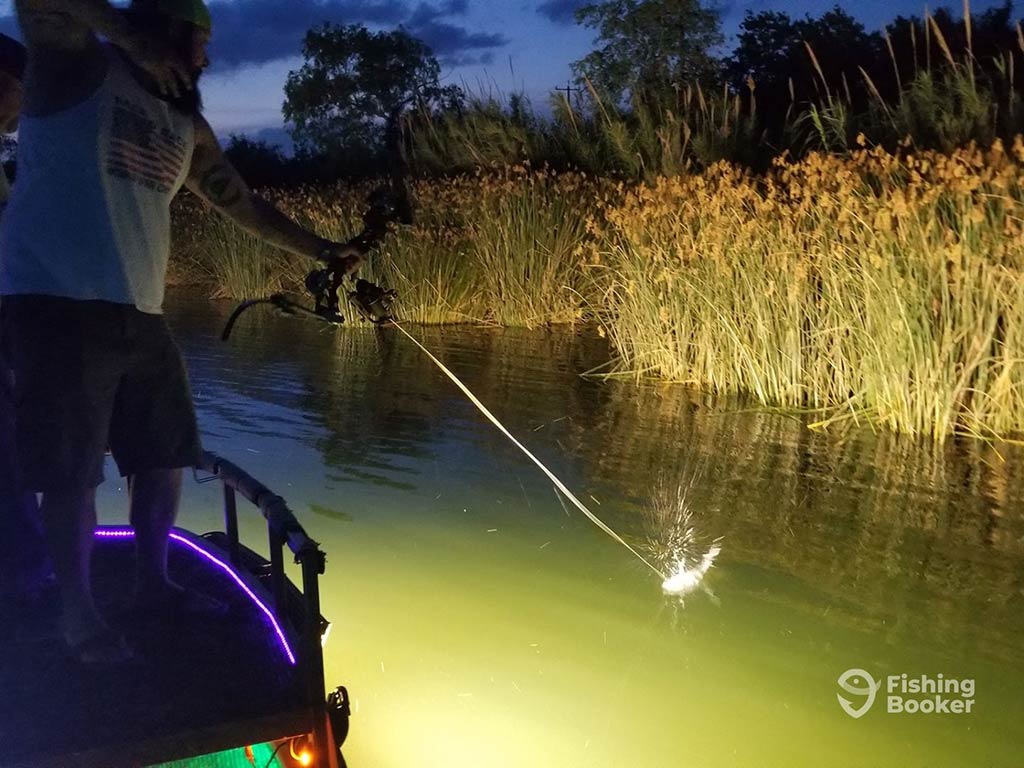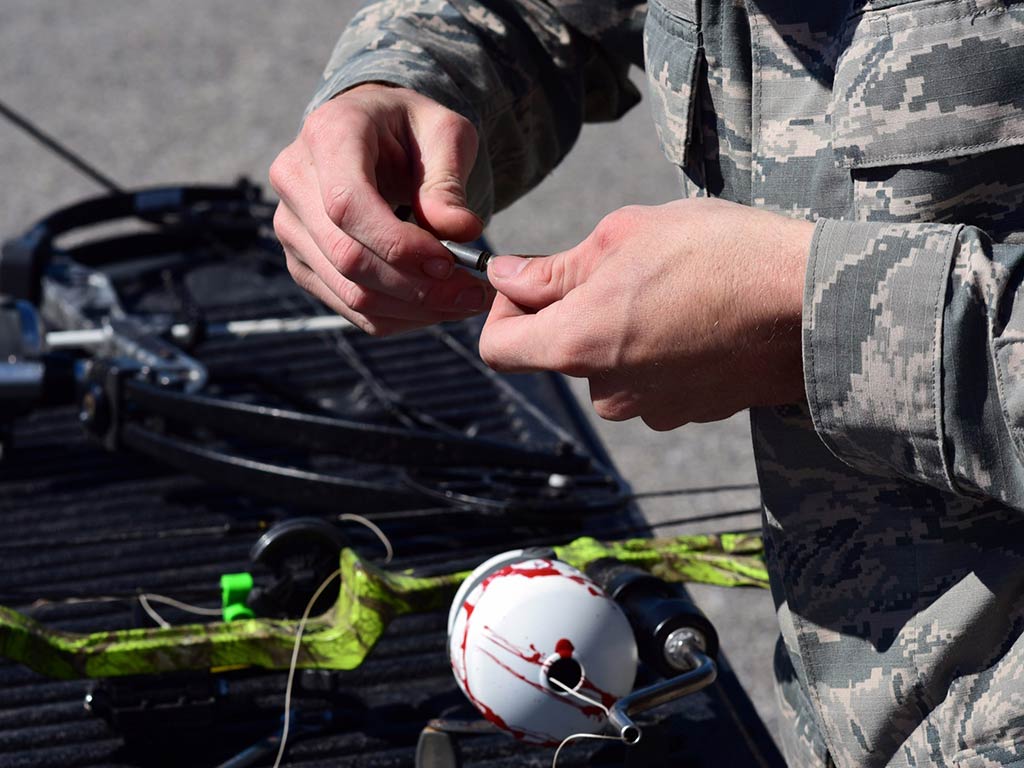With thrilling amusement parks, numerous bays, stunning shallow shorelines, and productive grassy flats, Galveston is the perfect destination for a Texan getaway. However, this island city offers much more than just a regular day on the water. The Lone Star State is famous for its amazing Flounder fishing opportunities, and there’s hardly a better place in Texas to find these creatures than Galveston. Flounder fishing here is something that takes things to the next level.

Why is it so popular, you ask? Well, it’s all about the experience and the thrill. Flounder fishing in Galveston is a pleasure that anyone can afford, from complete beginners to seasoned pros. In Galveston, everyone can get those bragging rights.
Read on to find out everything you need to know about the Galveston Flounder fishing scene. We’ll talk you through the most effective techniques, the top spots, and seasonality. By the time you’re done reading, it’ll be time to head down to the Gulf coast to get your fish on!
How to Go Flounder Fishing in Galveston
While Flounder aren’t the most beautiful species around, everyone agrees that they’re pretty unique. What other fish has two eyes on one side and a mouth that’s twisted permanently? Naturally, there are various techniques—some of them equally as unique as the fish—to catch these creatures.
Rod and Reel Fishing

Some might argue that there’s nothing better than the classical approach to Flounder fishing. This doesn’t mean that you end up just standing with a rod in your hand, waiting for the fish to bite. Not at all. First of all, you’ll need to select the right bait and prepare your hook. Then you cast off into the water—just like a local Texan.
You can try your hand at drifting, jigging, bouncing, and even trolling if you’re willing to experiment. It’s important to mimic the movement of Flounder’s prey with mud minnows, small shrimp, and mullet. Soft plastic jigs can also get the job done, but you’ll need to make sure they’re scented with Flounder’s favorite meal. Note that Flounder have pretty sharp teeth, so it’s never a bad idea to use a heavy braided line.
Bowfishing

Rods and reels aside, if you’re up for a challenge, consider bowfishing for Flounder. It’s essentially like archery. You need a bow, an arrow, and a target. Of course, you can’t use just any archery equipment—you’ll need a bow specifically designed for bowfishing. This typically features heavy-duty components and a sturdy reel to retrieve the arrow. The arrow itself will be shorter and heavier than traditional ones.
When you have the gear ready, you’ll want to find the best spot to take aim from. Look for areas with clear water to make sure you can spot the Flounder easier. Once you’ve spotted one, take aim for the body of the fish and shoot. Get ready for a fight, though, as Flounders are sturdy creatures who cling to the bottom of the sea.
Gigging

A lot of locals say there’s no better technique to catch Flounder than gigging. This is a truly authentic Galveston experience that can make you feel like a real hunter. Gigging involves stabbing—or spearing—the Flounder that lay in place on the seabed. Or, rather, lay buried in the sand.
Flounder gigging usually happens at night. A lot of guides offer such trips on a special boat, although that’s not a must. You’ll need to have a strong light source, though, since you’ll be mainly looking for Flounder’s eyes. Note that there are size and bag limits that you need to follow, so make sure you only spear as many Flounders as you intend to eat. Keep up-to-date with the regulations at the Texas Parks and Wildlife Department website.
When to Go Flounder Fishing in Galveston
Perhaps the best news is that Flounder can be caught in Galveston all year round. However, there are certain periods when they bite best. From September to November, these fish migrate from the bays to the Gulf of Mexico to spawn. The passes and jetties hold good numbers of Flounder during these months, as well as the channels that connect Galveston Bay with the ocean.

When the water temperature drops, male Flounders normally leave first, followed by females. If a severe cold front hits, it usually triggers a mass migration, which, in turn, increases your chances at a successful catch. In case the winter is moderate, Flounder will be distributed over a wider area, departing over a longer period of time.
Since Flounder flee the bays for winter, you can check out the deeper waters at this time of year. Of course, this isn’t the best time to try gigging since you’ll need heavier tackle to fish in deep waters.
Flounder migrate back to their native bays and estuaries sometime around April. Therefore, spring is arguably the second-best period to hunt for these toothy monsters. The fish are larger and, of course, will be ravenously hungry. If the Flounder population is higher, the annual spring run can come a bit earlier.
Don’t worry if you’re planning to fish during the summer months, though. While Flounder tend to be more scattered and harder to spot, you can still find them in the early morning or late evening.
Where to Go Flounder Fishing in Galveston
There are various spots throughout Galveston where you can find Flounder, including bays, estuaries, and nearshore waters. The key to finding the fish is to look for areas with sandy or muddy bottoms, as well as jetties, bridges, and piers. Flounder rally along shorelines, cuts, coves, drop-offs, and at the mouths of bayous.

For the best chance of success, look for areas with structure and slow-moving currents, especially from those backwaters along the southern coasts of the bay systems. Areas with murky green or brown water can also work to your advantage.
Top Galveston Flounder Fishing Spots
Here are some of our top spots to fish for Flounder in Galveston:
- West Bay: This large bay offers plenty of opportunities for Flounder fishing. Locals tend to focus on the shallow areas near the shoreline.
- Trinity Bay: Trinity Bay is an excellent spot for beginners and experienced Flounder enthusiasts, especially during fall.
- East Bay: East Bay is known for its healthy Flounder population, as they hang out in its clear, shallow waters.
- Galveston Bay: The largest estuary on the Texas coast is part of a vast bay system with plenty of jetties and passes leading into the Gulf, as well as the Intracoastal Waterway.
- Rollover Pass: The pass has long been known as a Flounder stronghold, especially around various jetties in the area.
- San Luis Pass: This area usually attracts a large number of Flounder, although you need to take the strong currents into consideration.
- Moses Lake: This small lake is located on the western side of Galveston Island and is the perfect spot for a Flounder trip during fall.
- Offshore Rigs: If you’re fishing for Flounder during winter, consider exploring the deep waters in the Gulf of Mexico, especially near the offshore rigs.
Galveston Flounder Fishing Gear
Now that you know how to target Flounder and where to go, it’s time to cover the gear you’ll be using. Of course, the choice of equipment depends on which technique you use…
If it’s your first time fishing for Flounder or perhaps you’ve never fished in Galveston before, consider booking a trip with a local guide. There are various crews in the area that offer specialized Flounder trips throughout the year. They also carry all the necessary gear and promise to give you their best advice. After all, who knows the area better than local fishermen?
Rods and Reels

There are a few key things to keep in mind when picking the right gear and tackle to fish for Flounder. First of all, you’ll want to use a rod with a sensitive top and a strong backbone. A medium-heavy spinning rod is a good choice that allows you to feel a Flounder’s strike.
Next, you’ll want to use a spinning reel with a smooth drag system, such as a 2500–4000 reel. Match that with a braided line with a 10–20 lb test and 20–30 lb fluorocarbon leaders. The beauty of braided lines is that you can afford to go stronger without sacrificing too much of the reel’s capacity.
Bait and Lures
A lot of locals prefer a simple jighead and soft plastic combo when picking lures for Flounder fishing. A 4–6′ Gulp! swimming mullet or DOA shrimp are among the most popular choices, along with 1/8 to 1/4 oz jigheads, depending on the composition of the bottom.
Live bait also works well. Pick shrimp, mud minnows, and finger mullet of about 1.5 to 2 inches and hook them using a medium-sized hook.
Gigging Gear
A typical Flounder gigging setup includes a good gig, lights, and a special boat. While this may sound simple enough, there are a few things you need to consider.
A well-designed Flounder gig is usually made of a strong, corrosion-resistant material with sharp points. A lot of giggers use multi-pronged 316 stainless steel or 17-4 stainless steel gigs, which are also good for wading.
When it comes to Flounder gigging lights, Texans can sometimes mount their LED setups both above the water and under it. A quality light needs to be bright and able to penetrate muddy water. In addition to that, it has to be compact enough in case you need to mount it on your gig pole.
If you’re gigging from a boat, you’ll need a vessel that can run shallow. Some anglers build their own boats, while others head out on regular bay boats. The lighter the better, whatever way you look at it.
Bowfishing Gear

It’s no secret that what matters most in bowfishing is comfort. As an instinctive sport, Flounder bowfishing can wear out even the most experienced angler if their setup isn’t comfortable.
Pick a heavy fiberglass or graphite arrow that can withstand a lot. Compound and recurve bows usually work well. Match that with a spincaster reel for average-size fish or a retriever reel for bigger Flounder. Add a good fiberglass arrow, and you’re almost set.
If you’re not into extra accessories, all you really need to complete the setup is the right line. You can use fishing braids, as long as the lines can spool on the reel.
Flounder Fishing in Galveston FAQs
Flounder Fishing in Galveston: Unleashing a Real Thrill

Galveston is known for its exceptional angling opportunities, but Flounder fishing is perhaps some of the most thrilling and rewarding out there.
Imagine the moon illuminating the waters as you set sail to discover the hidden treasures of Galveston’s bays and estuaries with a gig ready to strike. As you navigate through the brackish waters, the salty scent of the ocean fills your nostrils. You spot the large eyes on the ocean floor, and you’re ready to fight. It’s game on.
Yes, Flounder fishing in Galveston is truly unforgettable!
Have you ever been fishing for Flounder in Galveston? What’s your go-to technique? Do you have a favorite spot? Let us know in the comments below!
The post Galveston Flounder Fishing: The Complete Guide appeared first on FishingBooker Blog.
https://fishingbooker.com/blog/media/2023/03/Galveston.jpg
0 Comments
Enregistrer un commentaire